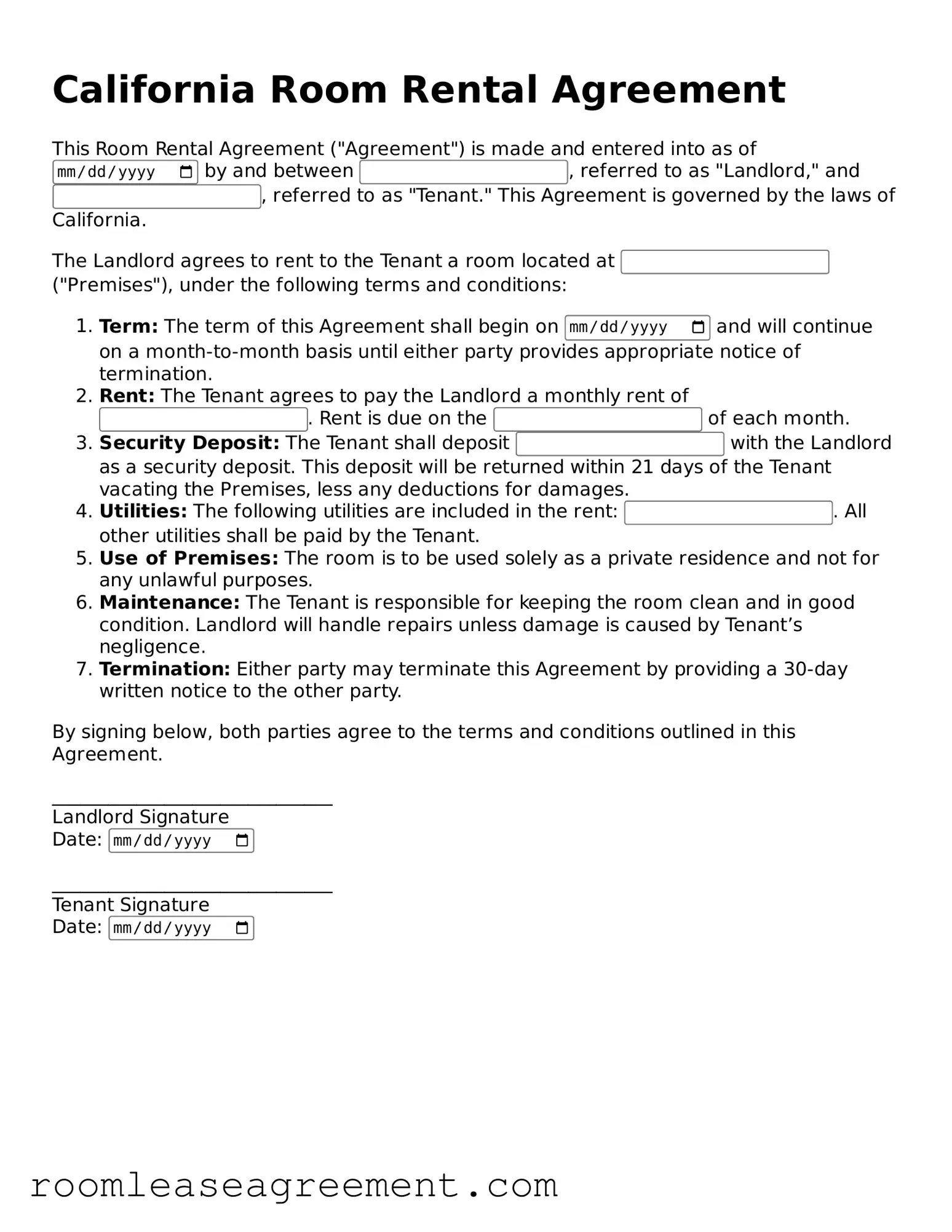The California Room Rental Agreement form is an essential document for both landlords and tenants in the state. It outlines the terms and conditions of renting a room, ensuring that both parties understand their rights and responsibilities. Key aspects include the rental amount, payment schedule, and duration of the lease. The agreement also addresses security deposits, maintenance responsibilities, and rules regarding pets or guests. By clearly defining these elements, the form helps prevent misunderstandings and disputes down the line. Additionally, it provides guidelines for terminating the rental agreement, ensuring a smooth process for both landlords and tenants. Whether you are a seasoned property owner or a first-time renter, understanding this form is crucial for a successful rental experience in California.
